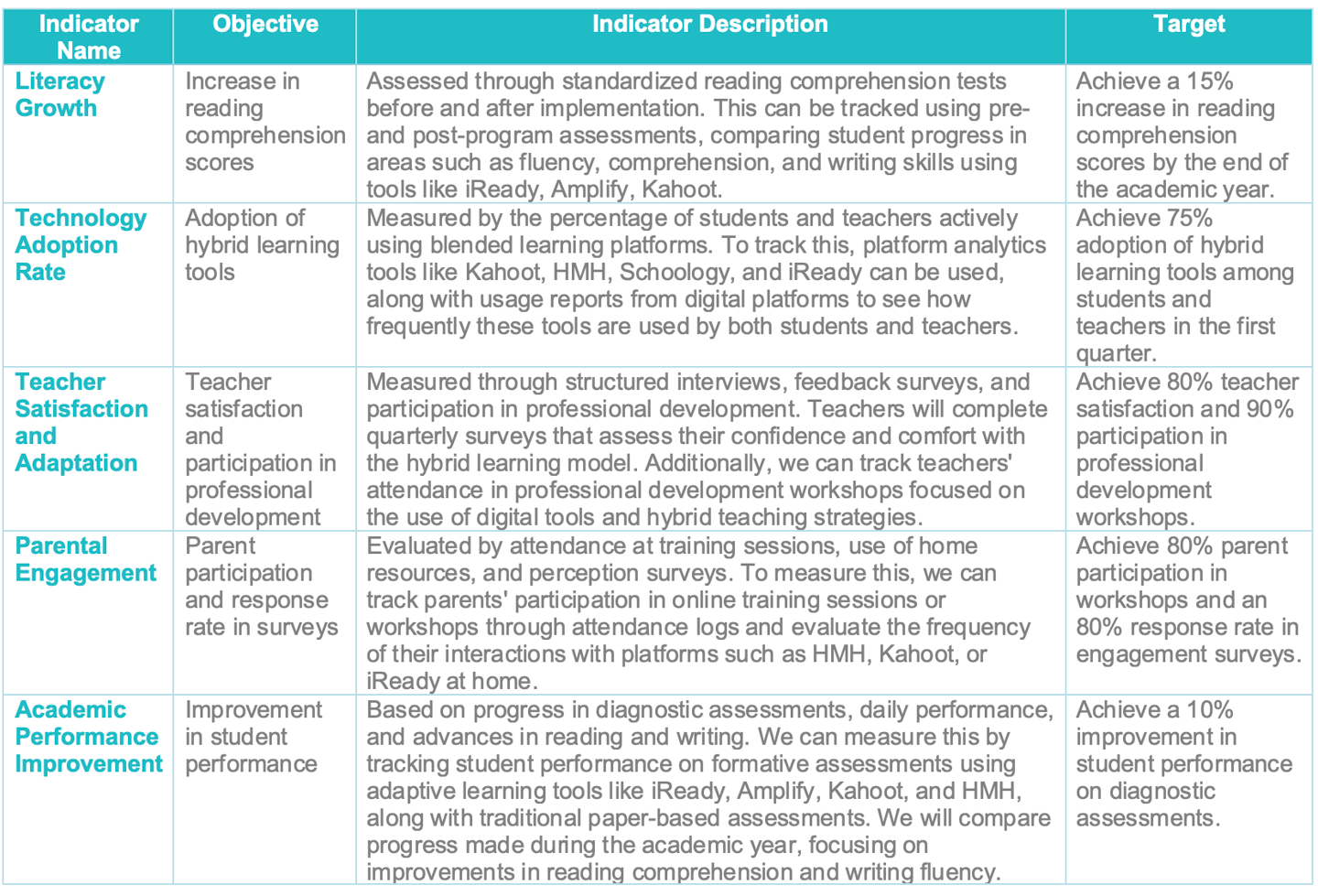Influence Strategy for Implementing Hybrid Learning Second-Grade Literacy
This strategy transforms the second-grade literacy process by implementing a blended learning model based on stations. Integrating technology with traditional teaching methods creates an engaging, personalized learning environment where students can work independently. The main goal is to foster a culture of autonomous, inclusive, and meaningful learning in the classroom, where students are empowered to take ownership of their learning journey, boosting academic performance and nurturing their personal and social development.
The blended learning model allows students to interact with various learning resources, technologies, and peer collaborations, enhancing their reading, writing, and critical thinking skills. This approach is also designed to engage families, creating a supportive learning ecosystem beyond the classroom. Ultimately, this strategy aims to equip students with the necessary tools to thrive academically and in life, preparing them for future challenges.
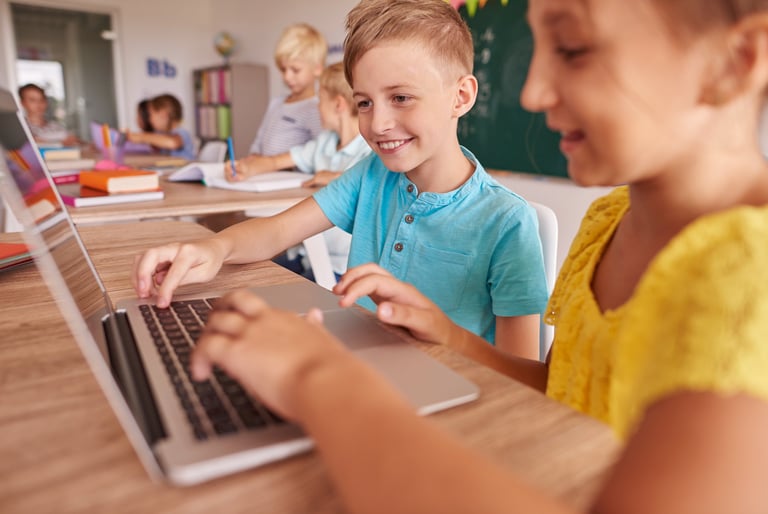

Foundation of the Influencer Strategy


Measurable Results
The expected outcomes of this strategy include increased student engagement, improved reading and writing comprehension, and the reduction of learning gaps in regular and neurodivergent students. These will be measured through the following key performance indicators (KPIs):
Expected Impact


The hybrid learning model can potentially significantly impact academic performance and the development of key skills in students. Below are the expected impacts and strategies for continuous monitoring to ensure that these impacts are effectively achieved:
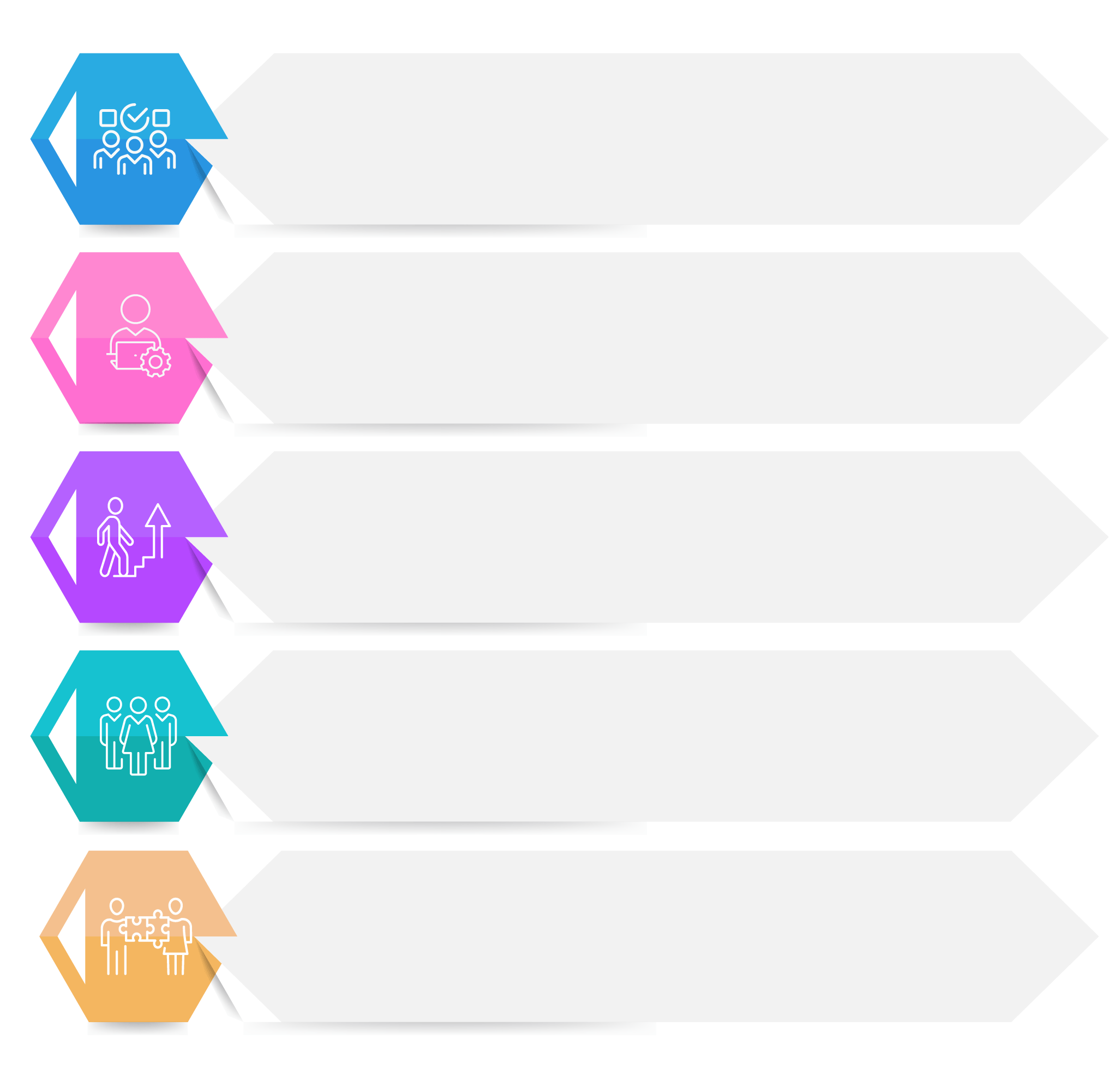

which will lead to improvements in motivation and engagement with learning. Research shows hybrid learning environments enhance student engagement through interactive digital tools and self-paced learning (Graham et al., 2021; Barron & Darling-Hammond, 2008). This impact will be measured through quarterly comparative analysis of student participation surveys and the use of digital platforms (iReady, Kahoot, Schoology). Additionally, the level of active participation in-person and virtual activities will be evaluated to see improvements throughout the academic year.
Increased student participation,
integrating digital tools such as iReady and Schoology fosters students' ability to navigate and analyze digital content effectively, essential for 21st-century literacy development (EDUCAUSE, 2024; Picciano, 2017). This impact will be evaluated through progress reviews in reading, writing, and critical thinking skills, using tools such as Amplify and iReady. Quarterly progress reviews will be conducted to measure student improvements in these areas.
Development of digital literacy and critical thinking skills,
especially among neurodivergent students and those with special educational needs. Personalized, competency-based approaches provide equitable access to education tailored to individual needs (Means et al., 2010; Shayeb & Daher, 2024). A personalized intervention plan will be implemented using adaptive assessment tools like iReady and Amplify to measure this impact. Additionally, a comparative analysis of results will be carried out between students with special needs before and after implementing the hybrid model.
Reduction of the learning gap,
Greater family involvement in the educational process
, promotes a more inclusive and sustainable learning experience. Parent training programs and digital literacy workshops are key to strengthening family participation in students' academic progress (Bernatek et al., 2012; University of Alberta, 2025). This impact will be measured by tracking parent attendance at training sessions and the frequency of their interactions with learning platforms such as Schoology and iReady. Surveys will also be distributed to parents to assess their involvement in supporting their children's learning activities.
allows for more effective personalized learning experiences. Adaptive assessments and station rotations help teachers adjust instruction to meet student’s needs, improving both efficiency and academic outcomes (Graham, 2019; EDUCAUSE, 2012). This impact will be measured by evaluating the effective use of instructional time and tracking learning stations. Adaptive tools like iReady and Kahoot will also be monitored to ensure students receive personalized instruction based on their needs
Optimization of Instructional Time,
Evaluation Plan


To ensure the expected impacts are effectively achieved, a continuous evaluation plan will be established, which will include several components focused on monitoring progress, engaging families, and measuring participation.
Quarterly Progress Reviews in Reading and Writing
To track long-term improvements in students' literacy skills, quarterly reviews will be conducted. These reviews will compare the results of initial assessments with final outcomes. For example, standardized reading comprehension tests will be used at the start and end of each semester, alongside formative assessments that measure fluency and writing skills. Tools such as iReady and Amplify will provide data to assess improvements in reading and writing fluency over time.
Monitoring the Reduction of the Learning Gap
Adaptive assessments through platforms like iReady and Amplify will be utilized to specifically monitor the reduction of learning gaps, especially for students with special needs or neurodivergent students. These platforms allow for individualized monitoring, giving educators a clear picture of each student's progress. For instance, students will take pre-and post-assessments to measure growth in reading comprehension, with data helping to identify areas where targeted intervention is needed. Additionally, individual progress will be tracked using reports that show specific skills students need to work on.
Surveys and Family Feedback
Family engagement is a critical aspect of student success. Regular surveys will be used to gather feedback on how families participate in the learning process. For example, surveys may ask parents how often they use online platforms like HMH or Kahoot at home to support their child's reading and writing practice. These surveys will also include questions about parents’ involvement in workshops or training sessions and their comfort in using digital tools at home. The data from these surveys will help adjust support strategies to ensure families are actively engaged and equipped to reinforce learning outside the classroom.
Measuring Student Participation
Active student participation will be monitored through several metrics. This will include the frequency of digital learning platforms, such as Schoology, and participation in interactive activities. For example, students' time on educational platforms like iReady will be tracked to see how often they engage with personalized reading or writing activities. Additionally, teachers will observe and rate participation in interactive group activities, such as collaborative projects or classroom discussions. This will allow us to assess students' engagement in their learning and identify areas where further motivation strategies may be needed.


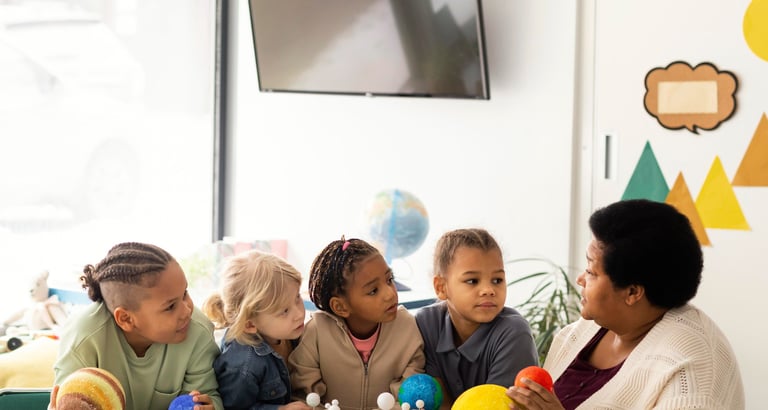



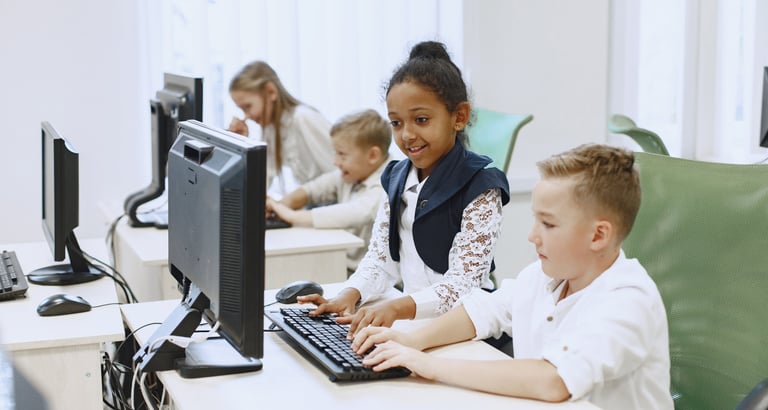

Organizational Influencers


The success of the blended learning model largely depends on the active participation and commitment of key actors within the educational community. These organizational influencers not only facilitate the implementation of change but also model behaviors that inspire and sustain long-term transformation. Below are the primary influencers within the school environment:


Mentor Teachers: These are educators who not only master effective teaching practices but also lead by example. Their openness to innovation, willingness to collaborate, and pedagogical experience make them key figures in supporting their colleagues through the transition to a hybrid model. They act as guides, modeling routines, sharing successful strategies, and providing peer support.
School Administrators: Their role is essential in creating the structural conditions necessary for change. From resource allocation to generating spaces for teacher training, school leaders must facilitate the development of the hybrid model, promote a culture of continuous improvement, and reinforce the institutional vision focused on personalized and inclusive learning.
Leader Families: These families actively participate in their children's learning process and become strategic allies. Through their participation in workshops, willingness to support the use of technologies at home, and positive influence within the community, they promote a culture of shared educational responsibility that strengthens the school-home connection.
Students Who Model Autonomy: Some children naturally assume leadership roles among their peers. These students participate enthusiastically, self-regulate, and collaborate actively, becoming role models who spread motivation and good practices. Their influence is potent, as peer behavior significantly impacts the classroom climate.
Instructional Coaches or Specialists: These pedagogical partners help translate theory into practice. They provide technical and didactic support, train in digital tools, and guide station planning, differentiation, and formative assessment. Their presence ensures more effective, sustainable implementation aligned with the plan’s objectives.
Behaviors and Application of the Six Sources of Influence Model


Certain key behaviors must be transformed to implement the hybrid learning model successfully. These behaviors are essential for students, teachers, coach instructionals, and families, who play a crucial role in the change process. Below are the vital behaviors to be transformed and the strategies to achieve these changes continuously.
Change begins when we positively influence behaviors because by transforming our actions, we create a future where goals are not just achieved but surpassed together. In an educational community, every small effort becomes a giant step toward success, where mutual support and shared commitment turn learning into a journey of growth and collective transformation.
To successfully implement the hybrid learning model and achieve the desired outcomes in second-grade literacy, involving and empowering various key actors within the educational community is essential. The strategy outlined here is designed to motivate and sustain the active participation of students, teachers, coaches-specialists, and families. Each of these stakeholders plays a critical role in driving the model's success, and to ensure that their contributions are aligned with the overall goals, a tailored matrix was developed for each group. This matrix integrates the Six Sources of Influence model (Patterson et al., 2013), which catalyzes behavioral change and long-term success. By considering the unique dynamics of each actor, the matrix focuses on how to foster motivation, build capacity, and create a sustainable and collaborative learning environment.
The matrices presented in this section are specifically designed to engage and empower these stakeholders, ensuring that students actively participate, teachers integrate the hybrid model into their teaching strategies, coaches and specialists provide continuous support, and families contribute to the learning process at home. This integrated approach ensures that everyone involved is equipped to contribute to the transformation of literacy education through the hybrid model, creating a learning ecosystem that supports both academic and personal growth.

The strategy Six Sources of Influence Strategy Matrix, aims to foster active and autonomous participation from second-grade students in the hybrid learning station model, ensuring they take responsibility for their tasks to meet their reading and writing goals. Combining personal motivation with personal and social abilities encourages intrinsic engagement, skill development, and peer support.
I invite you to discover how key behaviors can transform education by applying the Six Sources of Influence matrix. Each button will guide you to explore strategies that will positively impact the learning and growth of all educational stakeholders. Explore and discover the path to transformative education!
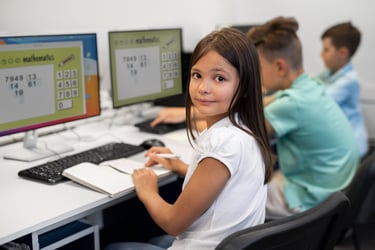

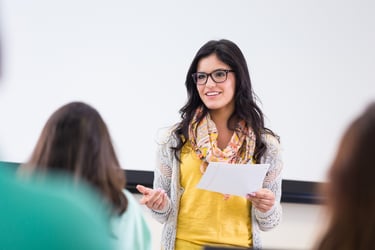



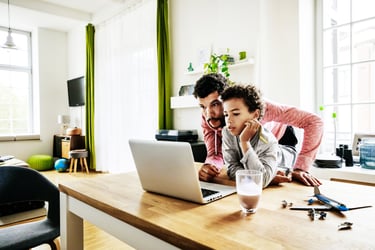

Students
Teachers
Coaches Specialists
Families
Students actively participate in the hybrid learning station model, taking autonomy and responsibility for their tasks to achieve their reading and writing goals.
Behavior
Behavior
Behavior
Behavior
Teachers consistently integrate hybrid stations into their daily planning, using differentiated strategies and digital tools to foster active, personalized, and inclusive learning.
Families actively engage in the hybrid learning process at home, providing support, motivation, and monitoring the use of digital tools and school activities, thus strengthening the connection between home and school.
Coaches and instructional specialists provide continuous support and actively promote a culture of innovation and continuous improvement. They facilitate resources, training, and an environment conducive to the effective implementation of blended learning.
Conclusions

To successfully implement the hybrid learning model and achieve the desired outcomes in second-grade literacy, involving and empowering various key actors within the educational community is essential. The strategy outlined here is designed to motivate and sustain the active participation of students, teachers, coaches-specialists, and families. Each of these stakeholders plays a critical role in driving the model's success, and to ensure that their contributions are aligned with the overall goals, a tailored matrix was developed for each group. This matrix integrates the Six Sources of Influence model (Patterson et al., 2013), which catalyzes behavioral change and long-term success. By considering the unique dynamics of each actor, the matrix focuses on how to foster motivation, build capacity, and create a sustainable and collaborative learning environment.
The matrices presented in this section are specifically designed to engage and empower these stakeholders, ensuring that students actively participate, teachers integrate the hybrid model into their teaching strategies, coaches and specialists provide continuous support, and families contribute to the learning process at home. This integrated approach ensures that everyone involved is equipped to contribute to the transformation of literacy education through the hybrid model, creating a learning ecosystem that supports both academic and personal growth.

References
Barron, B., & Darling-Hammond, L. (2008). Teaching for meaningful learning. The George Lucas Educational Foundation.
Bernatek, B., Cohen, J., Hanlon, J., & Wilka, M. (2012). Blended learning in practice: Case studies from leading schools. Michael & Susan Dell Foundation. https://library.educause.edu/resources/2012/9/blended-learning-in-practice-case-studies-from-leading-schools
EDUCAUSE. (2012). Blended learning in practice: Case studies from leading schools. EDUCAUSE Learning Initiative.
EDUCAUSE. (2024). 2024 EDUCAUSE Horizon Report: Teaching and Learning Edition. EDUCAUSE. https://library.educause.edu/resources/2024/5/2024-educause-horizon-report-teaching-and-learning-edition
Graham, C. R., Borup, J., Short, C. R., & Archambault, L. (2021). A case study of teachers' experiences of blended teaching and learning. International Journal on E-Learning, 20(1), 35-58. https://files.eric.ed.gov/fulltext/EJ1301080.pdf
Graham, C. R. (2019). Current research in blended learning: Integration, disruption, and acceleration. Computers & Education, 144, 103701.
Means, B., Toyama, Y., Murphy, R., Bakia, M., & Jones, K. (2010). Evaluation of evidence-based practices in online learning: A meta-analysis and review of online learning studies. U.S. Department of Education. https://www2.ed.gov/rschstat/eval/tech/evidence-based-practices/finalreport.pdf
Patterson, K., Grenny, J., Maxfield, D., McMillan, R., & Switzler, A. (2013). Influencer: The new science of leading change (2nd ed.). McGraw-Hill Education.
Picciano, A. G. (2017). Theories and frameworks for online education: Seeking an integrated model. Online Learning, 21(3), 166-190.
Shayeb, M., & Daher, W. (2024). The impact of teacher video recordings on digital pedagogical knowledge and instructional practice. Education Sciences, 14(9), 162.
University of Alberta. (s.f.). Blended Learning Case Studies. Centre for Teaching and Learning. Recuperado de https://www.ualberta.ca/en/centre-for-teaching-and-learning/teaching-support/learning-environments/blended-learning-case-studies.html

